Google Earth has enjoyed a front-row seat to the transformation that a patch of land in Bokakhat, Assam — where Medini Homestay now stands — has undergone from 2018 to 2024. A quick ‘before’ and ‘after’ glance at the snapshots will convey the passion of the duo behind this green endeavour: Champak Deka (a former deep-sea diver with the Indian Navy) and his wife Anna-Louise Meynell (a textile designer).
Running a homestay that bears hallmarks of sustainability while simultaneously catering to a modern world is akin to walking a tightrope, the duo points out. But, as in the case of tightropes, the ride is thrilling, they add.

A drive through Assam with the homestay as the destination reveals a landscape where the scenery gets more beautiful with each passing moment. Lush fields give way to thickening forests as the drive comes closer to the Kaziranga National Park, and these make way for sprawling countryside. Your ride will terminate exactly “in the middle of Assam”, according to Maps; at a spot where the thrum of the outside world melts away.
If you thought the journey was very winding, wait until you hear the story of the duo that started it. It has an equal number of twists and turns. Over a strong cup of Assamese tea, Meynell who hails from Scotland, will tell you proudly that she is completing a decade of living in the Northeast where she has been working in handloom development. Her hands-on knowledge is backed by her PhD in handweaving traditions in the Ri Bhoi district in Meghalaya.
Though Deka hails from a contrastingly different background, the two found common ground in wanting to empower the artisans of the Northeast through weaving and natural dyes.
As Deka shares, it was this shared interest that led him and Meynell to decide to turn this friendship into a lasting endeavour with nature at the core.
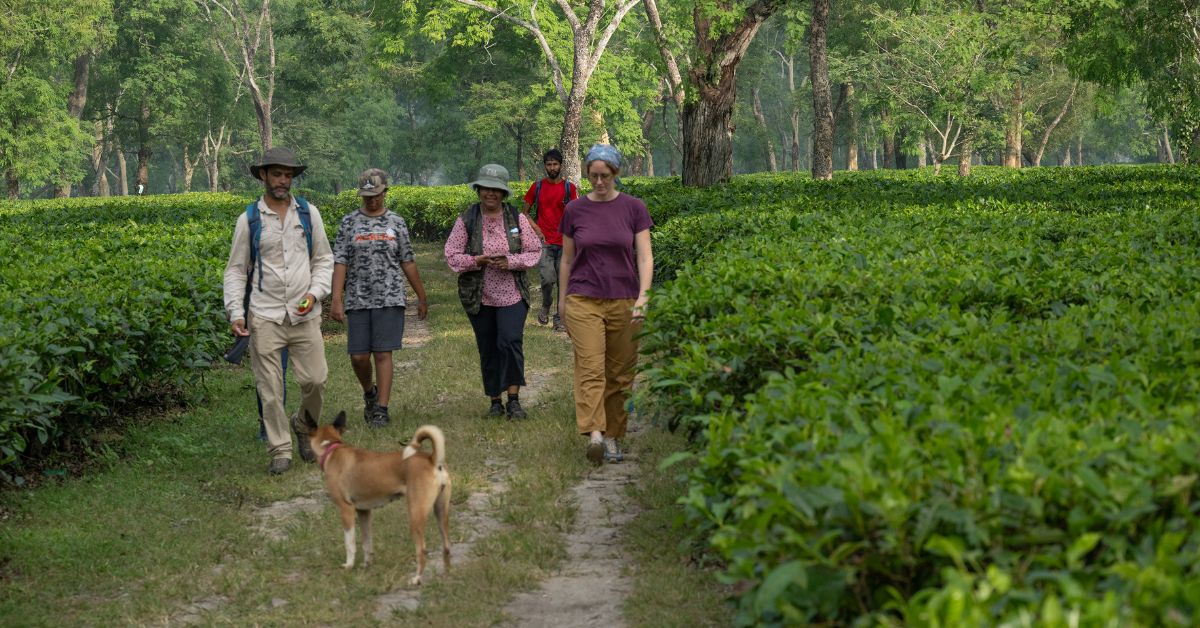
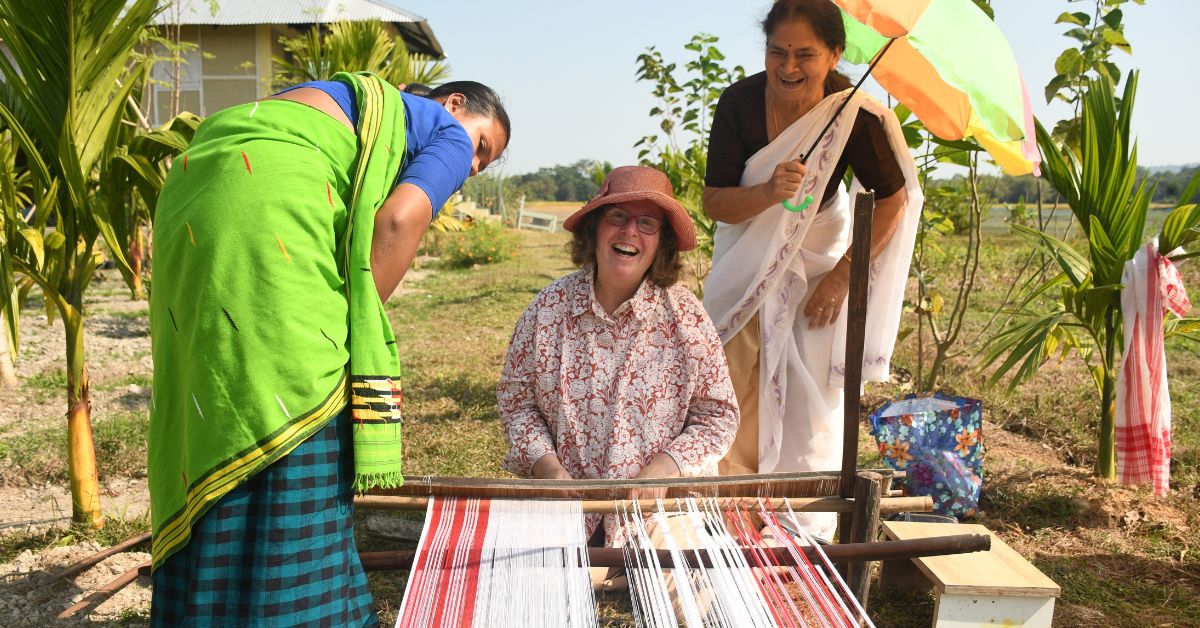
An oasis of green choices
The homestay is a short drive from the Kaziranga National Park — a 430 sq km area sprinkled with meadows, and species like the one-horned rhinoceros, elephants, wild water buffalo, swamp deer, ferruginous duck, Baer’s pochard duck, black-necked stork, and Asian Openbill stork. While nature lovers can head here for the day, the more culturally inclined ones can plan a day at the looms, where Meynell will be more than happy to guide you with tips and tricks.
As Deka notes, the weaving studio started as a project to ensure that his wife’s research in weaving and textiles didn’t remain as a document in an archive, but lived and breathed instead. “There was so much knowledge that we inherited from the indigenous people. We wanted to accumulate this and convert it into a physical form for the next generation. The idea was that if someone would want to study this subject in the future, this research should be a stepping stone for them,” he shares.
Today, he says, the weaving studio has taken on the avatar of a space that encourages conversations around hand-woven textiles against the backdrop of an industry struggling with the ‘consumer mentality’.
At the Medini Homestay, you’ll be privy to the process of silk production, from watching the rearing of the silkworms to spinning silk in real-time.
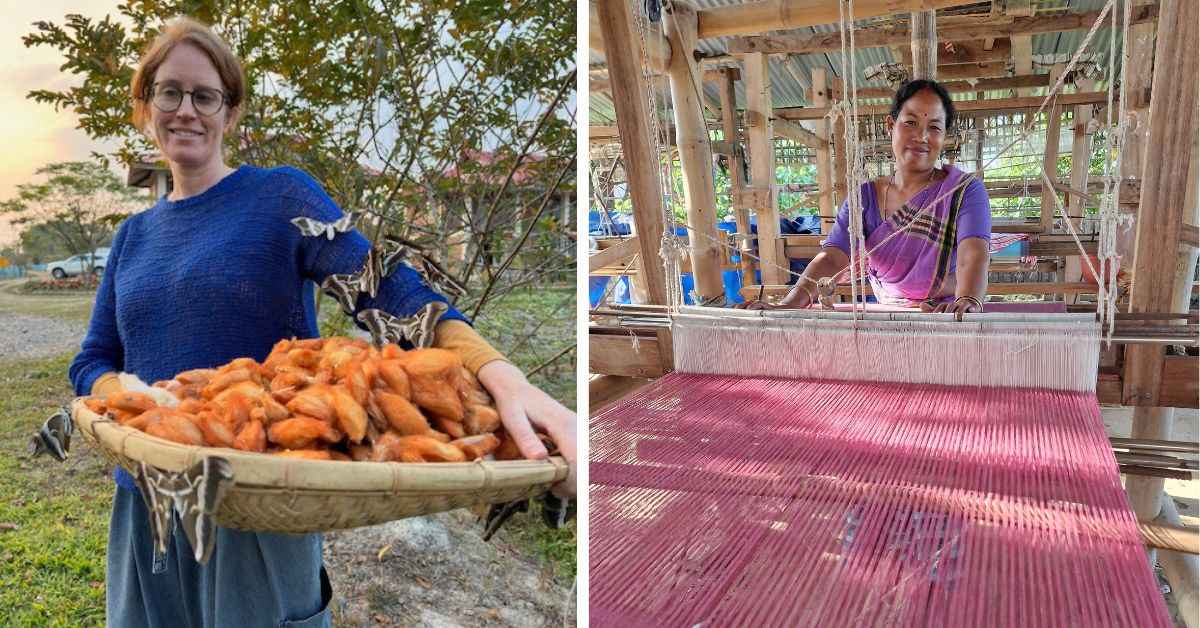
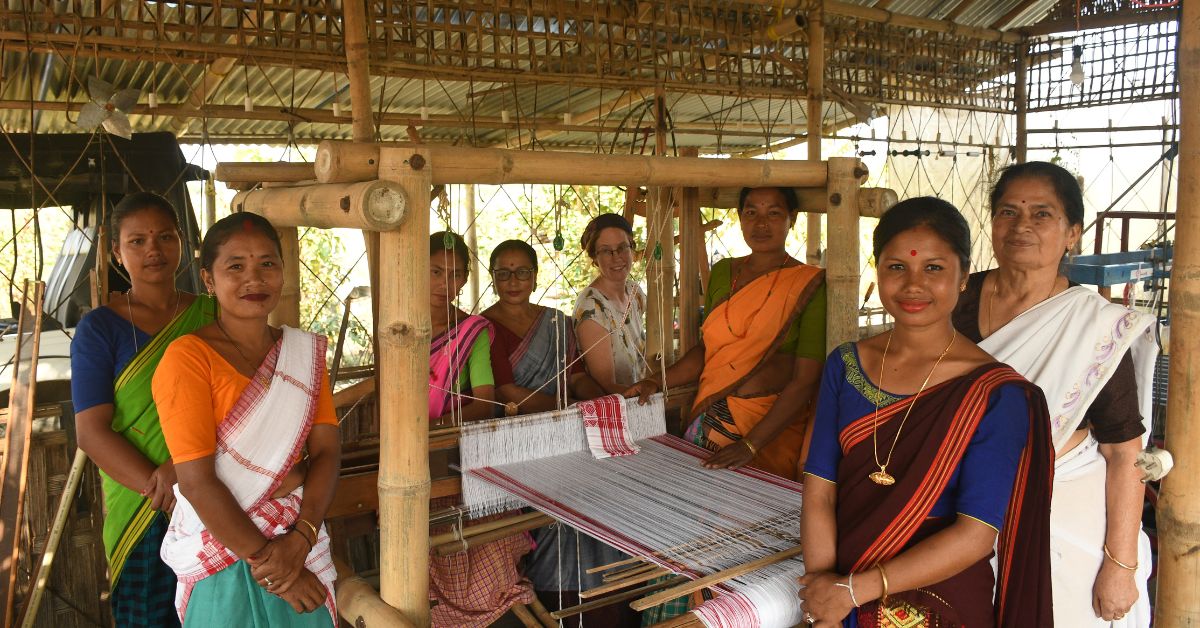
The duo prides their silk production techniques on being cruelty-free. “Our focus is on Ahimsa silk, also known as ‘eri’ silk,” Meynell explains. The name borrows from the Assamese word ‘era’, which means castor. In contrast to mulberry silk, which is spun using long continuous fibres and involves boiling of the cocoons (thus killing the silkworms), eri silk production is a less harmful process.
In this, the cocoons are boiled once the silkworms complete their metamorphosis into butterflies and moths. “This way, we aren’t disturbing their life cycle,” Meynell points out. The weaving studio has also given an impetus to the artisans in the area who earn through silk production and turning the silk into textiles.
Practising what they preach
Deka and Meynell shy away from making bold statements about their sustainable endeavours. “We see it more as a set of lifestyle choices,” Deka notes. Instead of positioning Medini Homestay as an ‘idyllic sustainable spot that doesn’t dare to contradict conventional approaches’, Deka says it is instead, a simple passion project for anyone looking to have a slice of nature with their tea.
Everything is a work in progress at Medini Homestay, he insists. Even himself. “I am still learning the ways of farming.” In 2018, when Deka stared at the piece of land he now calls home, he wasn’t as confident. The task of creating something beautiful out of the barren woodland felt daunting.
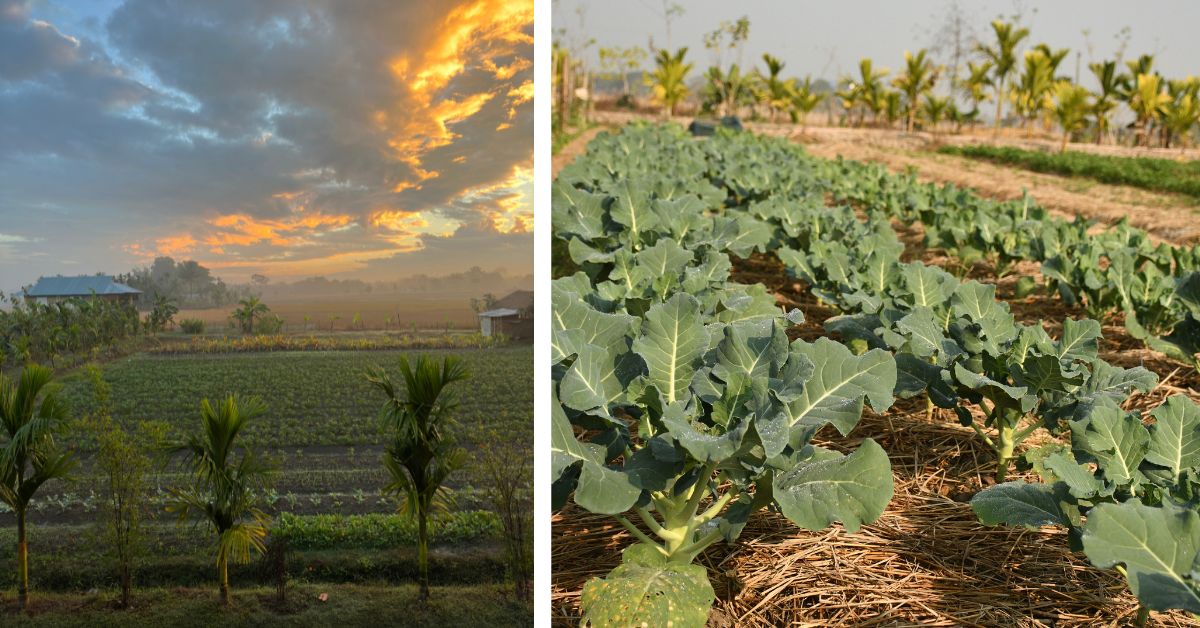
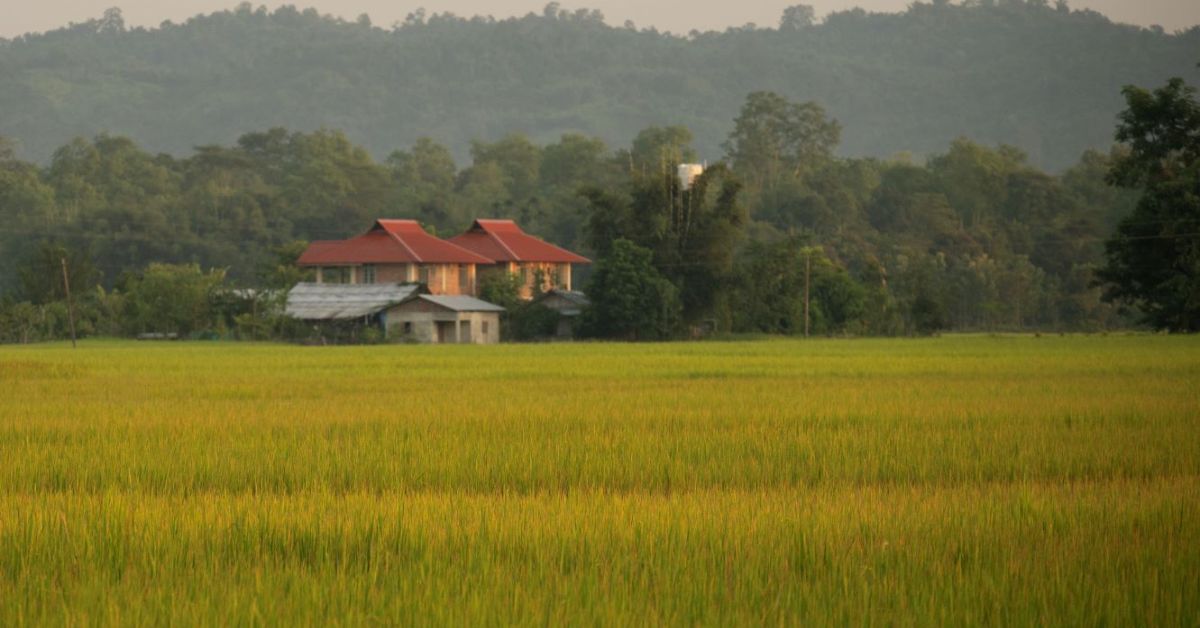
But he took on the challenge head-on. “The land had been excavated in parts, thus lacking a topsoil layer. When I began work on the land, there were around three trees and a small patch of tea plantation, attempted by the previous owner,” he says.
So today, when guests compliment the land thriving in all its green glory, they are compelled to wonder, “How?”
“We just kept planting and learning as we went along,” Deka answers. He recounts one instance that baffled him. “I had been putting green manure on the land but not seeing results. An elderly man who was on the land, at the time, asked me to ‘throw some urea’ and said that would make the land flourish.”
He adds, “It was heartbreaking to hear someone so experienced advising me to use chemicals. It became clear to me that the ideas of even seasoned people had been changed by industrial farming.”
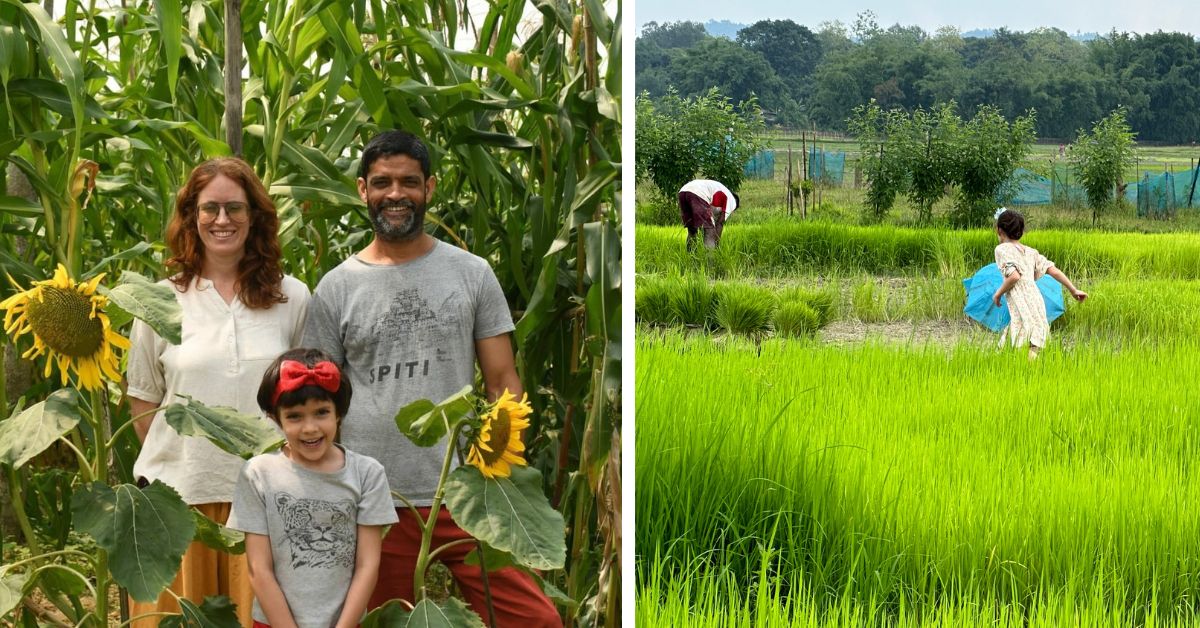

That day, Deka decided to never spray any chemicals on his land. It is six years and his commitment still holds true. But, it isn’t easy, he cautions. “You will make mistakes and you will learn from them, and even then, you might not get it right. But with each season, you will learn to refine your techniques and to read your plants and understand them.”
Another challenge, he says, is making inferences on plant health when he begins spotting signs of disease cropping up. “There have been times that I have sent a picture of the plant to the agricultural development officer explaining the symptoms. They responded saying it looked like a fungal infection and that I should resort to a particular chemical.”
In times like these, when Deka responds by saying he does not use chemicals on his plants, the line remains silent at the other end. This journey of odds would deter him you’d think. But it only makes him more resilient.
Today, the 500-plus trees that dot the landscape around Medini Homestay — including Indian olive, guava, mango, papaya, and banana — sway in the breeze, almost bowing down to him in thanks.
A passion project made of bamboo and wood
The property around the Medini Homestay is filled with trees — glistening water droplets at the edges of the leaves refracting the light — almost featuring the entire forest in a single drop. The view from your room is glorious. A drone view of the property reveals two blocks of construction. As Meynell explains, these are the family block and the guest block. “They are both identical and each has four rooms. The maximum capacity of the guest block is to accommodate nine people.”
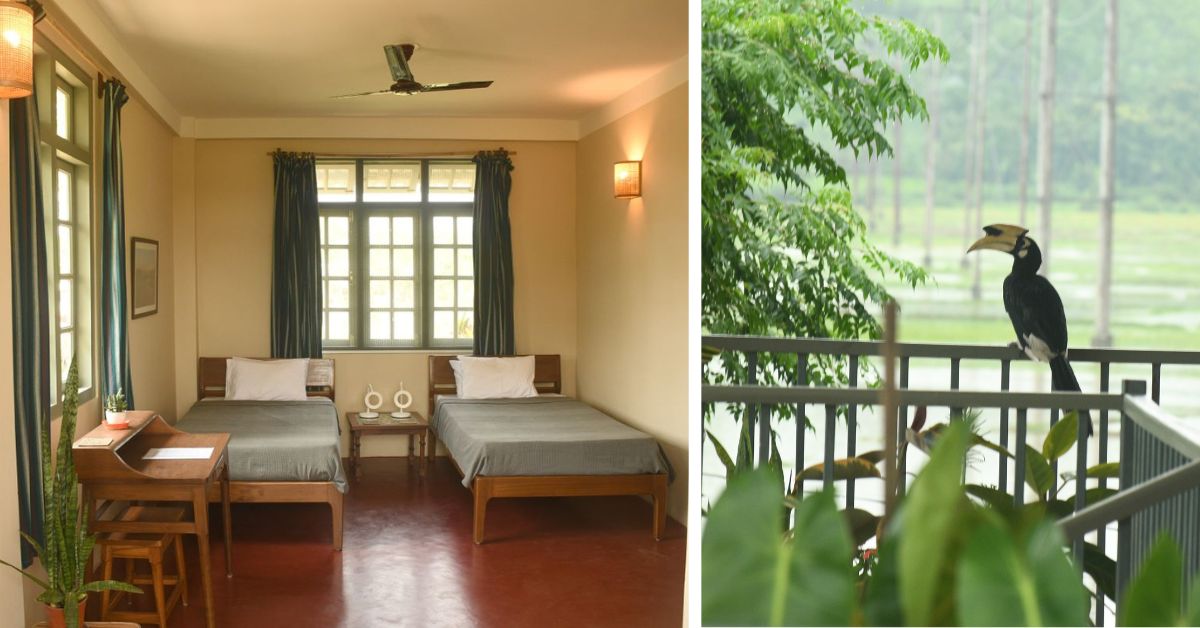
Ask Deka what has been used to build the homes, and he responds “Everything you can think of.”
Further probing reveals bamboo, wood, straw, mud, cow dung, a small percentage of concrete bricks, cement, and corrugated sheets come under the umbrella of “everything”.
“The basis of choosing these materials is dependent on their availability and also the practicality,” he says, adding that while every person with a sustainable bend of mind starts out wanting to build a home using only mud, calculated decisions need to be made.
At the homestay, the furniture is handmade. The bamboo and cane pieces were made in Nagaland while the curtains were handwoven in the studio. The mirrors and shelves were made by local artisans.

Meals at the homestay include various kinds of fragrant, sticky and black rice, urad daal (lentils), steamed and mashed herbs, meat with local herbs, fish and ou tenga ( elephant apple) curry, dishes made from banana flowers and stems, khar (an Assamese delicacy made from the peels of vegetables and said to have with medicinal properties).
While solar panels currently meet the needs of the fields, Deka says they are in the process of installing a solar water pump as well. Meanwhile, the water management model is exemplary.
“We are not connected to any municipality water system. All of our water comes from our borewell, which serves our kitchens, bathrooms, and farm use. Our sewage is treated in our custom-built biodigester plant, which has an anaerobic bacteria digester system,” Deka notes.
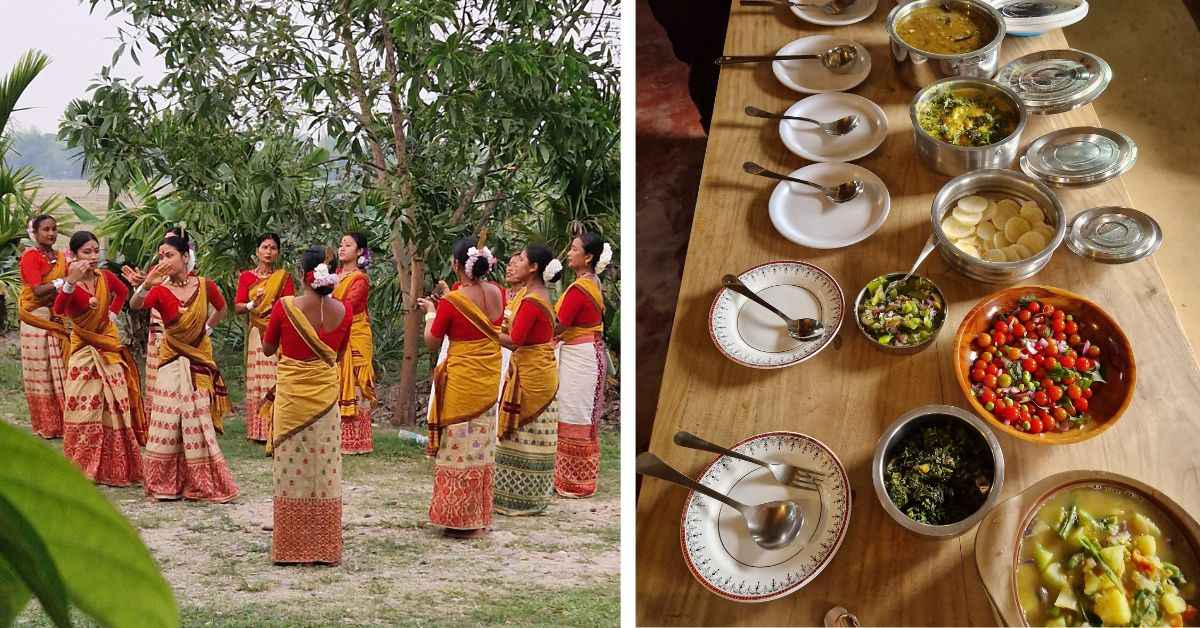
He adds, “Our grey water from the kitchens is treated through a natural reed bed made with stones, sand, and a natural reed bed, which purifies the water before it returns to the natural groundwater.”
It is amazing the oasis of green choices that the couple have been successful in creating with no prior background in agriculture. As Deka walks into the fields for yet another evening of conversing with his plants, his years of underwater diving seem well behind him. The sea of green is where he belongs!
Edited by Pranita Bhat; Picture credits: Champak Deka.
No comments:
Post a Comment